Jupiter
Most massive of the planets, gas-rich – larger than all the other planets combined
Shines twice as brightly as reflected sunlight would allow
- where does the extra energy come from?
Cloud formations, storms, and strong winds define the observed surface
- Great Red Spot (a 300 year-old storm)
- site of the Shoemaker-Levy cometary impact (1994)
- 20 comet fragments impacted Jupiter, over a span of days
- first evidence for water in the Jupiter atmosphere
- do we see impact craters? other remnants?
- was the atmosphere strongly affected?
Many major and minor moons
- major moons formed from a nebula around Jupiter (as the planets formed around the Sun)
- major moons are differentiated, heated by tidal forces (causing friction within the moons)
- Io: metallic core, rock, no water, no craters, and active volcanoes!
- Europa: rock and (thin) ice, liquid water below the surface
- Ganymede: rock and ice, geological activity (faults, craters)
- Callisto: rock and ice, liquid water below the surface
- minor moons, 10 kilometers in size, some with retrograde motion – accreted asteroids?
Rings, thin and reddish – made of moon dust?
If there were life on Jupiter, what would it be like? Could there be life on any of the moons?
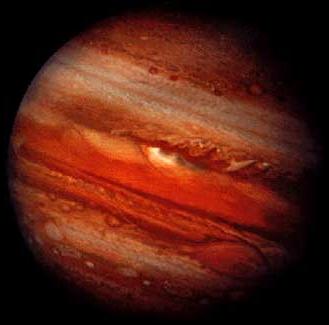
| 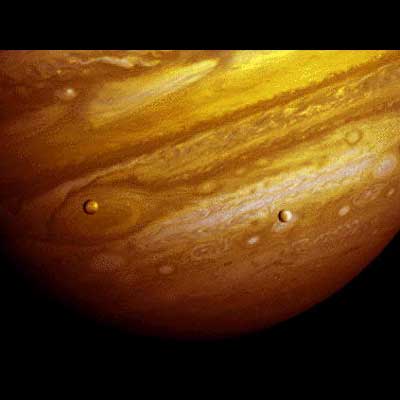
Io and Europa
| 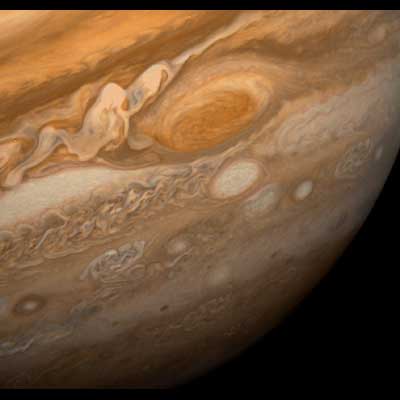
Great Red Spot
| 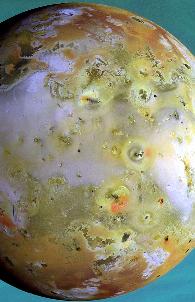
Io
| 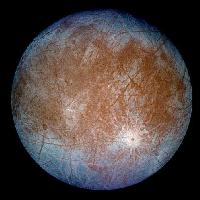
Europa
|
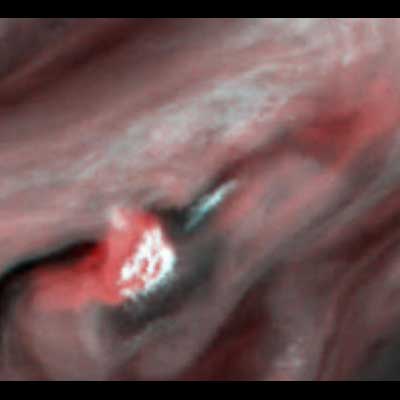
Water Cloud Thunderstorm
| 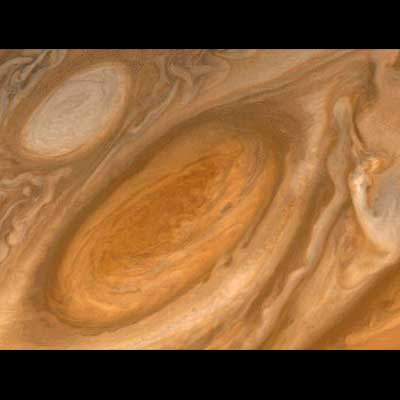
White Cloud
| 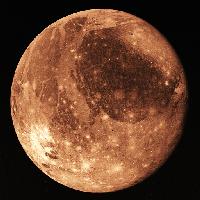
Ganymede
| 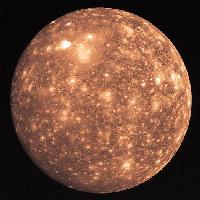
Callisto
|
| Images of Jupiter and its primary moons. [NASA] |

















